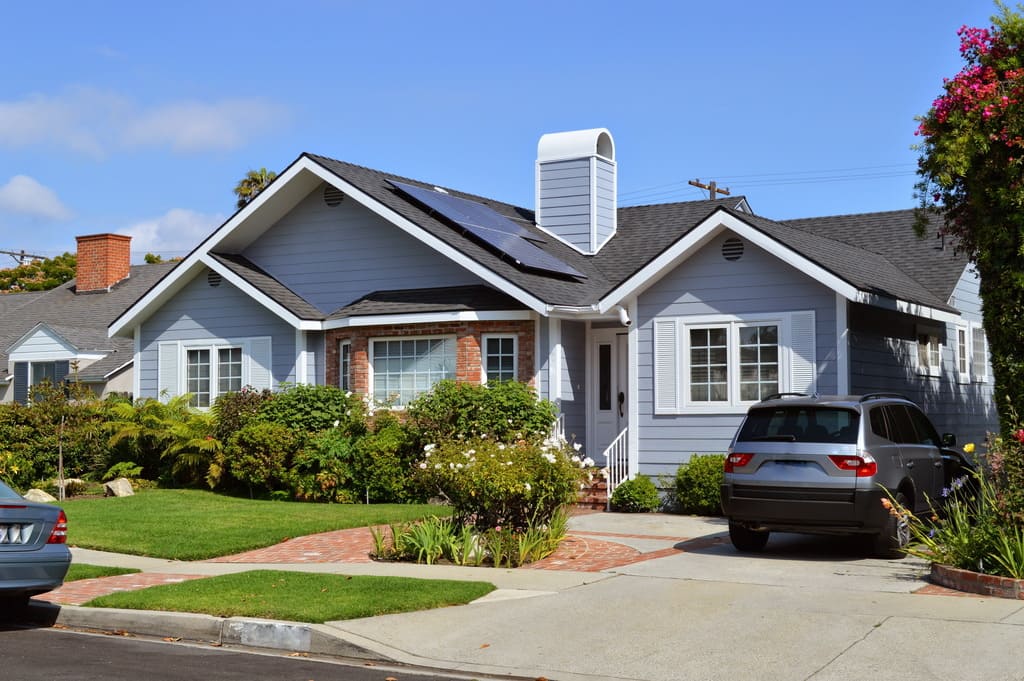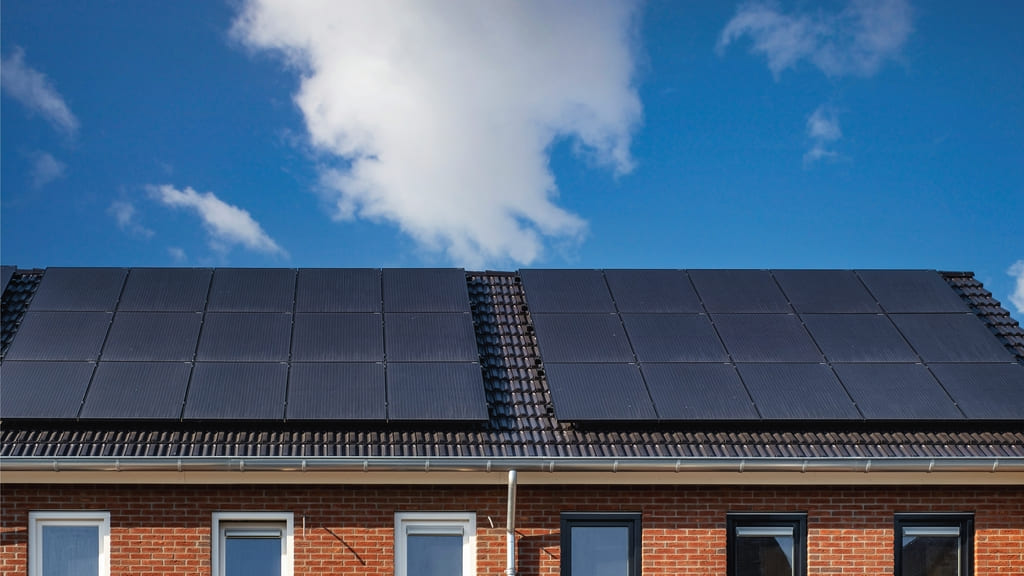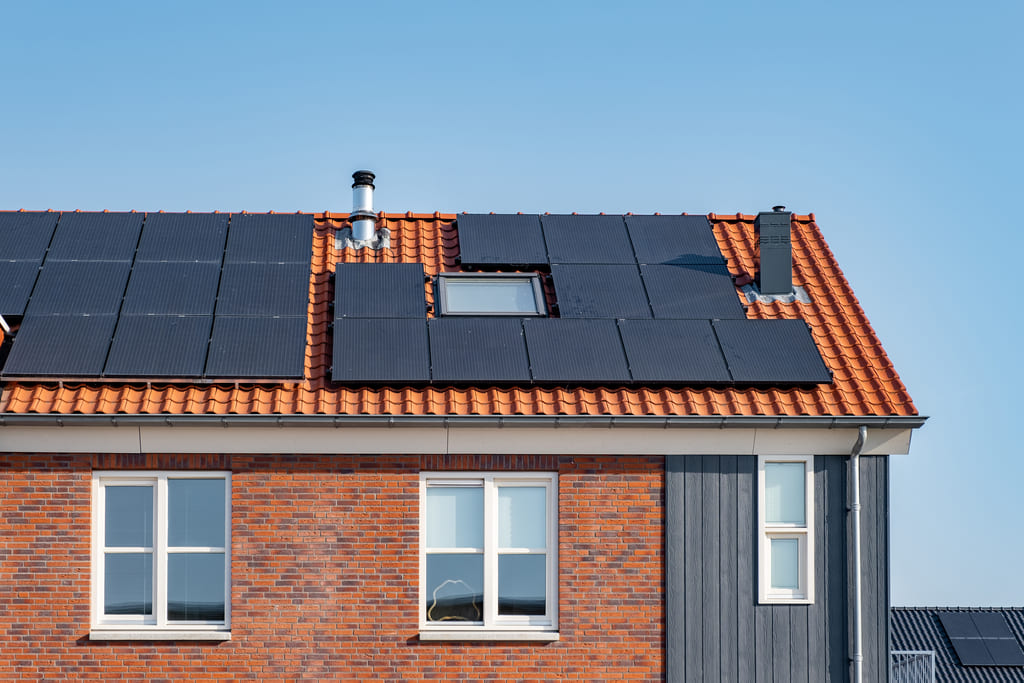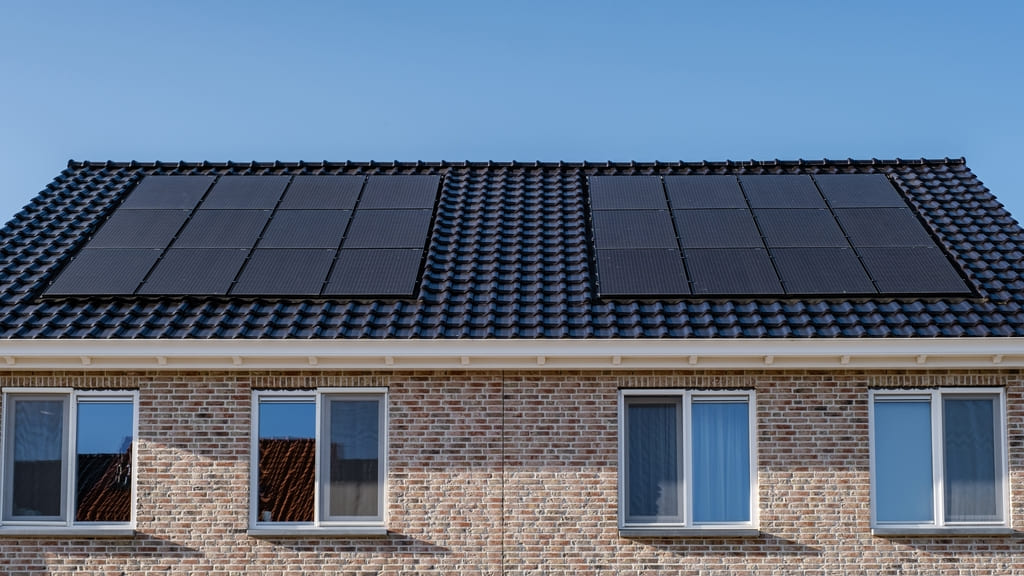In 2024, the landscape of solar energy and its impact on the environment and economy is rapidly evolving. The demand for solar panels continues to grow as more homeowners and businesses seek sustainable and cost-effective energy solutions. Understanding the different types of solar panels, the factors influencing their cost, and the potential benefits and drawbacks of installation is crucial for anyone considering this investment.
This article will delve into the various types of solar panels, explore the key factors affecting their cost, and provide insights into the average cost of solar panels in 2024. We will discuss the compelling benefits of installing solar panels, as well as the potential drawbacks that individuals and businesses should consider. Whether you are a homeowner looking to reduce your electricity bills or a business owner interested in embracing renewable energy, this comprehensive guide will equip you with the knowledge needed to make informed decisions about solar panel installation.
Key Takeaways:
- The cost of solar panels in 2024 will depend on factors such as type, size, location, and government incentives, but the average cost is expected to decrease due to advancements in technology and increased demand.
- Installing solar panels can provide long-term benefits, including lower electricity bills, a renewable energy source, and an increase in home value.
- While there are drawbacks such as high upfront costs and dependence on weather conditions, the benefits of installing solar panels outweigh the drawbacks in the long run.
What Are the Different Types of Solar Panels?
Solar panels come in various types, with each offering unique characteristics and efficiencies.
Monocrystalline solar panels are known for their high efficiency and durability. They are made from high-purity silicon, making them highly efficient in converting sunlight into electricity. These panels are ideal for rooftops with limited space and are well-suited for residential and commercial use.
On the other hand, polycrystalline panels are more affordable and easier to manufacture. Although slightly less efficient than monocrystalline panels, they perform well in high-temperature and low-light conditions. They are commonly used for large-scale solar installations and off-grid applications.
Thin-film solar panels, on the other hand, are lightweight and flexible, making them suitable for various applications such as building-integrated photovoltaics and portable solar devices. They have a lower efficiency but can perform better in shaded conditions and at higher temperatures compared to crystalline panels. These panels offer versatility in their usage, contributing to their popularity in certain niche markets.
Monocrystalline Solar Panels
Monocrystalline solar panels are renowned for their high energy efficiency and sleek design, making them a popular choice for residential and commercial solar installations.
These solar panels are made from a single continuous crystal structure, offering higher energy efficiency compared to other types of solar panels. The monocrystalline structure allows for a higher power output per square foot of solar panels, maximizing energy production in limited space.
Monocrystalline solar panels have a long lifespan, often exceeding 25 years, owing to their durable construction and resistance to harsh weather conditions. This longevity makes them a reliable investment for those seeking sustainable and efficient energy solutions.
They are ideal for rooftop installations, where space is a premium, as they can produce significant energy even in limited area. Due to their high energy conversion efficiency, monocrystalline solar panels are an environmentally friendly option, reducing carbon emissions and overall environmental impact.
Polycrystalline Solar Panels
Polycrystalline solar panels offer a cost-effective and reliable solar solution, suitable for both residential and commercial applications due to their competitive pricing and moderate efficiency.
These solar panels present a compelling choice for individuals and businesses seeking to offset their energy costs without making a substantial upfront investment. The installation requirements are relatively straightforward, making them an attractive option for various settings.
Their efficiency in converting sunlight into electricity ensures a sustained energy supply for numerous applications, including powering homes, businesses, and even outdoor facilities. This makes them versatile and advantageous in diverse energy-conscious endeavors.
Thin-Film Solar Panels
Thin-film solar panels are known for their flexibility and lightness, making them ideal for unconventional installations and portable solar power systems.
This unique characteristic allows them to be installed on curved surfaces, such as vehicles, backpacks, and even clothing, expanding their applications beyond traditional solar panels. Their portability makes them popular for off-grid solutions, camping, and outdoor activities, providing an independent power source for various devices. These panels are highly suitable for applications in aerospace, where weight and space are critical factors.
What Factors Affect the Cost of Solar Panels?
Several factors influence the cost of solar panels, including the type of panel, system size, and installation expenses.
The type of panel plays a crucial role, with monocrystalline panels typically carrying a higher price due to their efficiency and longevity, whereas polycrystalline panels are more budget-friendly. The system size impacts costs as larger systems tend to be more expensive upfront, but can result in greater long-term savings.
Installation expenses, such as labor, equipment, and permits, also contribute significantly to the overall cost. Various financial incentives and rebates, including federal and state tax credits, net metering programs, and financing options can influence the cost-related entities tied to solar panel installation.
Type of Solar Panel
The choice of solar panel type significantly affects the overall cost, with various manufacturers offering different pricing and performance levels.
When considering the cost implications of different solar panel types, it’s essential to look at the initial investment, maintenance expenses, and long-term energy savings.
Monocrystalline panels, known for their high efficiency, tend to have a higher upfront cost but offer better performance over time, making them a popular choice for homeowners seeking long-term value.
On the other hand, polycrystalline panels are more affordable upfront and have lower efficiency, which might result in higher long-term costs due to reduced energy production.
Size of Solar Panel System
The size of the solar panel system, measured in kilowatts, directly impacts the overall cost and energy production capability, with larger systems offering higher output but requiring a higher initial investment.
When considering the cost implications of different solar panel system sizes, it is important to note that while larger systems may necessitate a higher initial investment, they also have the capacity to generate more energy, thereby offering potential long-term cost savings. On the other hand, smaller solar panel systems may require a lower upfront cost, but their energy production capability is also comparatively lower.
Therefore, it is essential to analyze the energy output and production variations across various system sizes to determine the most suitable option based on individual energy needs and budget constraints.
Location and Installation Costs
The geographical location and associated installation costs, along with the availability of local incentives, play a crucial role in determining the overall expense of solar panel implementation.
When considering the geographical location, factors such as sunlight exposure, weather patterns, and potential shading from nearby buildings or trees need to be carefully assessed. These elements directly affect the efficiency of solar panels and thus impact the overall energy production.
Installation costs can vary significantly depending on the accessibility of the location and the complexity of the installation process. For instance, rooftop installations in urban areas may involve higher expenses than ground-mounted systems in rural regions due to the need for specialized equipment and labor. Local incentives, such as tax credits, rebates, or performance-based incentives, can substantially reduce the upfront costs associated with solar panel implementation and shorten the payback period. In some regions, feed-in tariffs for excess energy production can also contribute to the financial attractiveness of solar energy systems. Therefore, it’s essential for individuals and businesses to consider these location-specific elements and incentives when evaluating the overall costs and benefits of solar panel implementation.
Government Incentives and Rebates
Government incentives and tax credits play a significant role in reducing the overall cost of solar panel installations, providing financial benefits and support for homeowners and businesses through collaborations with solar companies.
For instance, federal tax credits can offset a substantial portion of the initial investment in a solar energy system, effectively lowering the upfront costs. Many states offer their own incentive programs such as rebates, grants, and performance-based incentives, further reducing the financial burden on consumers.
Partnerships between local governments and solar companies can lead to exclusive deals and discounts on solar panel installations, making renewable energy solutions more accessible and affordable for a wider demographic.
What Is the Average Cost of Solar Panels in 2024?
The average cost of solar panels in 2024 varies based on the cost per watt, panel pricing, and the total expense for an average home solar system.
Taking into account the cost per watt, which typically ranges from $2.50 to $3.50, the overall expense of installing solar panels on residential properties can vary significantly. Factors contributing to this variance include the quality and efficiency of the panels, installation complexities, and any additional features such as battery storage.
When calculating the cost of solar panels, it’s important to consider the long-term savings on energy bills and any available tax credits or incentives that can offset initial expenses.
Cost per Watt
The cost per watt is a key metric influencing the average cost of solar panels, directly impacting the long-term savings and overall financial feasibility of solar energy investments.
Understanding the cost per watt is crucial as it determines the initial investment required for a solar panel system. Lower cost per watt implies higher savings potential over the system’s lifespan, making solar energy financially attractive.
When evaluating solar panel options, looking beyond the initial purchase cost to determine the cost per watt can provide a more accurate assessment of long-term benefits and Return on Investment (ROI). It’s an essential factor in determining the financial viability and economic advantages of harnessing solar power.
Cost per Panel
The cost per panel contributes to the overall expense of a solar system, influencing the budgeting and financial planning for solar installations based on individual panel costs.
Regarding considering individual solar panel costs, it’s important to factor in the pricing variations based on the type and efficiency of the panels. The cost of a single panel can vary significantly depending on the technology used, the brand, and the power output. The number of panels required for a specific installation can add up to a substantial portion of the overall system cost, impacting the feasibility of the project. It’s essential to carefully assess these factors to ensure that the chosen panels align with the allocated budget and financial goals.
Cost for a Typical Home System
The cost assessment for a typical home solar system encompasses installation expenses, panel pricing, and associated residential solar installation costs, tailored to meet the energy needs of households.
Installation overheads for residential solar systems typically include expenses for mounting hardware, wiring, inverters, and labor costs. The pricing of solar panels varies depending on the type, efficiency, and wattage of the panels selected, and residential installation costs factor in permitting, inspections, and potential upgrades to electrical systems to ensure smooth integration of the solar system with the household’s energy grid.
What Are the Benefits of Installing Solar Panels?
Installing solar panels brings various benefits, including reduced electricity bills, access to renewable and sustainable energy, and an increase in home value.
By harnessing solar power, households can significantly lower their electricity expenses. With renewable energy sources, the reliance on non-renewable resources decreases, fostering a more sustainable environment.
Notably, the incorporation of solar panels can substantially enhance the property’s valuation, making it an appealing investment with long-term financial benefits.
Lower Electricity Bills
One of the significant benefits of solar panels is the reduction in average annual electricity bills, leading to long-term savings and financial efficiency, which can be calculated using solar savings calculators.
Many homeowners and businesses are turning to solar energy as a sustainable and cost-effective solution to power their properties. By harnessing sunlight to generate electricity, solar panels offer a renewable and environmentally friendly alternative to traditional energy sources. This shift not only curtails dependency on the grid but also translates into noticeable reductions in electricity expenses over time.
The financial benefits of this investment become apparent when considering the consistent savings achieved through reduced reliance on traditional utility services. Individuals and organizations can leverage solar savings calculators to estimate potential cost reductions over the decades, further highlighting the compelling financial case for incorporating solar energy systems.
Renewable and Sustainable Energy Source
Solar panels serve as a renewable and sustainable energy source, contributing to lower carbon emissions and environmental impact while enabling consistent solar energy production.
The use of solar panels is a key component of the shift towards clean energy solutions. By leveraging the capabilities of the sun, solar panels produce electricity without generating harmful greenhouse gases, thereby reducing the reliance on fossil fuels. As a result, the widespread adoption of solar energy helps to mitigate climate change and protect the environment.
The consistent production of solar energy ensures a reliable source of power, aiding in the stability and sustainability of energy systems.
Increase in Home Value
The installation of solar panels leads to a tangible increase in the market value of residential properties, making them a worthwhile investment with a positive impact on property appraisal and potential worth.
This added value is attributed to the numerous benefits associated with solar panels. Not only do they provide clean and sustainable energy, but they also reduce electricity costs for homeowners. The environmental consciousness and energy independence they symbolize are increasingly appealing to buyers, elevating the desirability of properties with solar installations.
As a result, appraisers are taking into account the long-term cost savings and eco-friendly aspects when assessing the worth of residential homes with solar panels.
What Are the Drawbacks of Installing Solar Panels?
Despite the benefits, installing solar panels comes with certain drawbacks, including high upfront costs, reliance on sunlight, and space requirements for installation.
The significant initial investment in purchasing and installing solar panels can deter many prospective customers. Although long-term savings on electricity bills might offset the initial expense, the high upfront costs can still be a barrier for some.
Moreover, solar energy generation is directly dependent on sunlight, meaning energy production can fluctuate or cease during cloudy or night-time conditions, hampering the continuous supply of electricity. The physical space required for installing solar panels can pose challenges, especially for urban dwellers with limited rooftop or land space.
High Upfront Costs
The high upfront costs associated with solar panel installations can present a financial barrier for homeowners, despite the potential average solar savings over time.
Many individuals find the initial investment in solar panels to be daunting, as it often requires a significant outlay of funds. It’s important to consider the long-term benefits, as solar panel installations can dramatically reduce or even eliminate monthly electricity bills.
Numerous studies have shown that homeowners can achieve substantial cost savings over the lifetime of the solar panels, making the upfront expense a worthwhile investment. In addition, with various federal and state incentives, the overall financial burden can be significantly mitigated. Furthermore creative financing options make the up front money needed not an issue, and in many cases the swap from electric bills to a loan payment is a cheaper alternative both in the immediate term, as well as throughout the life of the system.
Dependence on Weather and Sunlight
Solar panels’ reliance on weather conditions and sunlight exposure can impact the consistent generation of solar energy, leading to fluctuations in annual electricity production.
Weather patterns play a crucial role in determining the performance of solar panels, as variations in cloud cover, temperature, and precipitation directly influence the amount of sunlight reaching the panels. Cloudy days or prolonged periods of rain can reduce the efficiency of solar energy generation, thereby affecting the overall electricity output.
Requires Space for Installation
The space requirements for solar panel installation can pose challenges for residential properties, necessitating adequate area and structural considerations for integrating solar systems effectively.
Regarding installing solar panels on residential properties, the space required can vary depending on factors such as the size of the solar array and the efficiency of the panels. The orientation of the roof and any shading from nearby structures or trees can significantly impact the available space for installation.
For homeowners considering solar panel integration, it’s essential to assess the available area for optimal placement and performance. The installation process often involves the utilization of available roof space or ground area, with considerations for panel tilt, spacing between panels, and clearance from obstructions.
Frequently Asked Questions
How Much Do Solar Panels Cost In 2024?
There are many factors that can affect the cost of solar panels in 2024, including the type of panels, add-ons (like battery systems), location, roof type and house direction, incentives, as well as financing costs. On average, the cost can range from $15,000 to $55,000 for a home, yet the specific amount is tied directly to the energy usage and these other factors.
What are the different types of solar panels and how do they impact the cost in 2024?
The three main types of solar panels are monocrystalline, polycrystalline, and thin-film. Monocrystalline panels are the most efficient and expensive, while polycrystalline and thin-film panels are more affordable but less efficient.
Will the cost of solar panels decrease in 2024?
It is expected that the cost of solar panels will continue to decrease in the coming years due to advancements in technology and increased competition in the market. This makes 2024 a great time to invest in solar energy as the incentives tied to solar are still strong in 2024, but some signs show that the incentives will not last for many more years–and have already been decreasing year over year.
Are there any incentives or rebates available to help with the cost of solar panels in 2024?
Yes, there are various federal and state incentives and rebates available for installing solar panels. These can significantly reduce the cost and make it more affordable for homeowners and businesses.
How can I estimate the cost of solar panels for my specific location in 2024?
You can use online calculators or consult with a solar panel installation company to get an estimate of the cost for your specific location in 2024. They will take into account factors such as your energy usage, roof size, and local incentives.
What are the long-term cost savings of installing solar panels in 2024?
While the upfront cost of solar panels may seem high, they can provide significant long-term cost savings on your electricity bills. In 2024, as electricity prices continue to rise, solar panels will become an even more cost-effective option for homeowners and businesses.
The best first step is to have a complete review of the potential project with a Simple Flow energy advisor. To set up an appointment, visit us at https://app.gosimpleflow.com.



